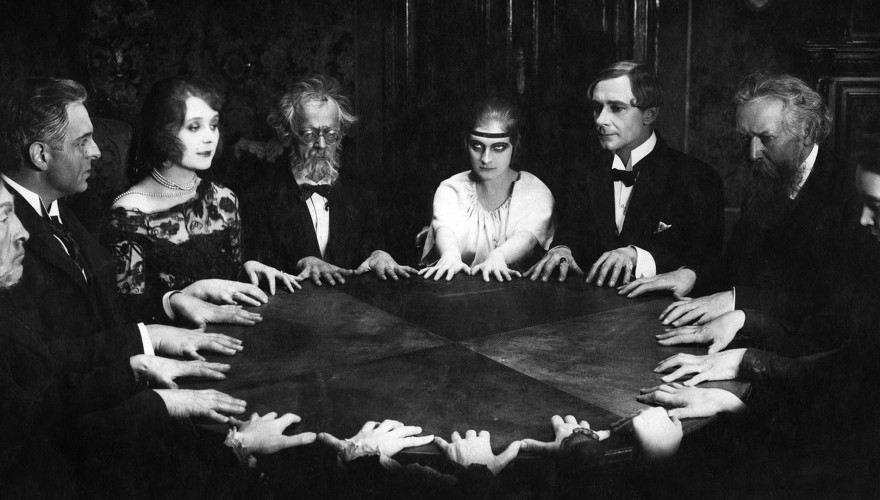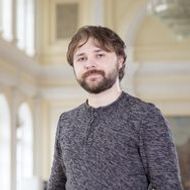Hi-Tech Grief: HSE Researchers Explore the Pros and Cons of Digital Commemoration

Researchers at HSE University in Nizhny Novgorod have explored how technological advancements are transforming the ways in which people preserve the memory of the deceased and significant events. Digital technologies enable the creation of virtual memorials, the preservation of personal stories and belongings of the deceased, interaction with their digital footprint, and even the development of interactive avatars based on their online activity. However, these technologies not only evoke nostalgia and provide a sense of relief but can also heighten anxiety and fear, and delay the process of accepting loss. The study has been published in Chelovek (The Human Being).
The desire to commemorate significant people, events, and traditions has existed throughout human history. Architecture, religious rituals, family legends, and genealogical records are all examples of how we strive to preserve memory. This desire becomes especially significant when people confront the finiteness of life. Anxiety, fear, and grief drive us to ensure that we leave a mark, enabling others to reconstruct the images of those who are no longer around.
Historically, people have preserved the memory of the departed through texts such as obituaries, diaries, or vital records. Today, technology provides far more possibilities, including multimodal formats such as photos, videos, and audio, as well as virtual cemeteries, online memorial platforms, and even digital replicas of the deceased.
'We are at a fascinating juncture where one of the oldest rituals in human culture—funeral rites—is undergoing change. The shift from analogue to digital memory is shaping new approaches to commemoration. Thousands of people tune in to watch live broadcasts of the funerals of active internet users,' notes Timur Khusyainov, Deputy Dean of the Faculty of Humanities at the HSE Campus in Nizhny Novgorod.
According to the researchers, this transition to virtual space makes the topic of death less taboo and significantly broadens the number of mourners. New forms of grieving are emerging on social media, including virtual funerals, memorial posts, and the creation of online communities to honour the deceased, whose personal pages transform into memorial sites. According to some estimates, by 2060, Facebook (a banned organisation in the Russian Federation) may have more pages of deceased users than of living ones. However, this publicity alters the perception of death itself: once in the digital space, it becomes ubiquitous, commonplace, and loses its individual significance, distancing itself from the lived experience.
The deceased begin to exist in virtual space, continuing to 'live' through their digital footprints—not only the content they consciously created but also a vast array of other interactions, such as fitness tracker data, search history, and even the log of connections to a router.
The authors emphasise how the digitalisation of death is increasingly featured in popular culture. Films and television series, such as Black Mirror and Cybervillage (Кибердеревня), explore how digital technologies influence the memory of the departed and their role in modern life. This illustrates how much society cares about the topic and seeks to incorporate related developments into the context of daily life, bridging the possible and the real.

The collection and handling of digital footprints have also become an issue. After a person's death, their data—including correspondence, photos, social media posts, and device information—remains in the digital space. This raises a variety of ethical and legal concerns. For example, the EU General Data Protection Regulation (GDPR) protects the personal data of deceased individuals for 30 years after their death, but this regulation is fragmented. Legislation has been enacted in the USA to regulate access to digital heritage through online wills and powers of attorney.
Despite these measures, the issue persists. In some cases, platforms have become de facto owners of the data, allowing them to handle digital footprints at their discretion. This can result in information leakage, manipulation, and the creation of digital avatars without the consent of relatives or the will of the deceased. AI-powered chatbots enable the creation of digital avatars of deceased individuals, which, based on vast amounts of data, can virtually 'revive' a person, recreating their voice, speech patterns, and even habits.
According to the researchers, digital avatars of the deceased can be likened to the monster brought to life by Dr Frankenstein: an image constructed from digital footprints and artificially animated in virtual space. On one hand, it is powerful and human-like, but upon closer inspection, its flaws become apparent—errors occur when generating images, and language models often produce false information.
'A machine can be imbued with otherworldly qualities, giving rise to the myth of resurrection and immortality. Technologies serve as modern-day “spirit mediums,” similar to those used in Victorian-era séances, allowing us to interact with those "risen from the dead," whose number is growing,' Khusyainov notes.
'An important aspect of digital "resurrection" is its impact on the emotional experience of the living in relation to death and dying. On one hand, interacting with digital footprints helps people in their grieving process by fostering a sense of continued connection with the deceased. On the other hand, technologies can also hinder the process of accepting loss. Instead of confronting the finiteness of life, a person becomes immersed in the illusion of communicating with a digital "doppelgänger," which increases anxiety and the risk of retraumatisation,’ explains Ekaterina Urusova, co-author of the article, visiting lecturer at the HSE Campus in Nizhny Novgorod, and existential-humanistic psychotherapist.
Ekaterina Urusova
See also:
HSE Scientists Reveal How Disrupted Brain Connectivity Affects Cognitive and Social Behaviour in Children with Autism
An international team of scientists, including researchers from the HSE Centre for Language and Brain, has for the first time studied the connectivity between the brain's sensorimotor and cognitive control networks in children with autism. Using fMRI data, the researchers found that connections within the cognitive control network (responsible for attention and inhibitory control) are weakened, while connections between this network and the sensorimotor network (responsible for movement and sensory processing) are, by contrast, excessively strong. These features manifest as difficulties in social interaction and behavioural regulation in children. The study has been published in Brain Imaging and Behavior.
Similar Comprehension, Different Reading: How Native Language Affects Reading in English as a Second Language
Researchers from the MECO international project, including experts from the HSE Centre for Language and Brain, have developed a tool for analysing data on English text reading by native speakers of more than 19 languages. In a large-scale experiment involving over 1,200 people, researchers recorded participants’ eye movements as they silently read the same English texts and then assessed their level of comprehension. The results showed that even when comprehension levels were the same, the reading process—such as gaze fixations, rereading, and word skipping—varied depending on the reader's native language and their English proficiency. The study has been published in Studies in Second Language Acquisition.
Mortgage and Demography: HSE Scientists Reveal How Mortgage Debt Shapes Family Priorities
Having a mortgage increases the likelihood that a Russian family will plan to have a child within the next three years by 39 percentage points. This is the conclusion of a study by Prof. Elena Vakulenko and doctoral student Rufina Evgrafova from the HSE Faculty of Economic Sciences. The authors emphasise that this effect is most pronounced among women, people under 36, and those without children. The study findings have been published in Voprosy Ekonomiki.
Scientists Discover How Correlated Disorder Boosts Superconductivity
Superconductivity is a unique state of matter in which electric current flows without any energy loss. In materials with defects, it typically emerges at very low temperatures and develops in several stages. An international team of scientists, including physicists from HSE MIEM, has demonstrated that when defects within a material are arranged in a specific pattern rather than randomly, superconductivity can occur at a higher temperature and extend throughout the entire material. This discovery could help develop superconductors that operate without the need for extreme cooling. The study has been published in Physical Review B.
Scientists Develop New Method to Detect Motor Disorders Using 3D Objects
Researchers at HSE University have developed a new methodological approach to studying motor planning and execution. By using 3D-printed objects and an infrared tracking system, they demonstrated that the brain initiates the planning process even before movement begins. This approach may eventually aid in the assessment and treatment of patients with neurodegenerative diseases such as Parkinson’s. The paper has been published in Frontiers in Human Neuroscience.
Civic Identity Helps Russians Maintain Mental Health During Sanctions
Researchers at HSE University have found that identifying with one’s country can support psychological coping during difficult times, particularly when individuals reframe the situation or draw on spiritual and cultural values. Reframing in particular can help alleviate symptoms of depression. The study has been published in Journal of Community Psychology.
Scientists Clarify How the Brain Memorises and Recalls Information
An international team, including scientists from HSE University, has demonstrated for the first time that the anterior and posterior portions of the human hippocampus have distinct roles in associative memory. Using stereo-EEG recordings, the researchers found that the rostral (anterior) portion of the human hippocampus is activated during encoding and object recognition, while the caudal (posterior) portion is involved in associative recall, restoring connections between the object and its context. These findings contribute to our understanding of the structure of human memory and may inform clinical practice. A paper with the study findings has been published in Frontiers in Human Neuroscience.
Researchers Examine Student Care Culture in Small Russian Universities
Researchers from the HSE Institute of Education conducted a sociological study at four small, non-selective universities and revealed, based on 135 interviews, the dual nature of student care at such institutions: a combination of genuine support with continuous supervision, reminiscent of parental care. This study offers the first in-depth look at how formal and informal student care practices are intertwined in the post-Soviet educational context. The study has been published in the British Journal of Sociology of Education.
AI Can Predict Student Academic Performance Based on Social Media Subscriptions
A team of Russian researchers, including scientists from HSE University, used AI to analyse 4,500 students’ subscriptions to VK social media communities. The study found that algorithms can accurately identify both high-performing students and those struggling with their studies. The paper has been published in IEEE Access.
HSE Scientists: Social Cues in News Interfaces Build Online Trust
Researchers from the HSE Laboratory for Cognitive Psychology of Digital Interface Users have discovered how social cues in the design of news websites—such as reader comments, the number of reposts, or the author’s name—can help build user trust. An experiment with 137 volunteers showed that such interface elements make a website appear more trustworthy and persuasive to users, with the strongest cue being links to the media’s social networks. The study's findings have been published in Human-Computer Interaction.




